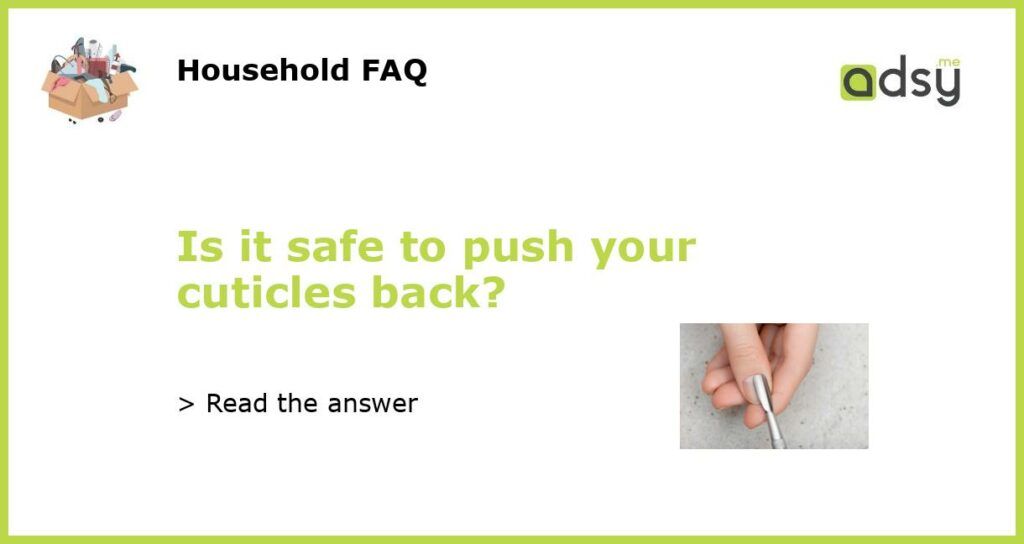Understanding the function of cuticles
Cuticles are small, thin strips of skin that protect the base of the nail. Without cuticles, bacteria, dirt, and other harmful substances can enter the nail bed and cause infections. Additionally, cuticles provide a barrier that prevents moisture from escaping, keeping nails healthy and hydrated.
The pros and cons of pushing back cuticles
Pushing back cuticles can improve the appearance of nails, making them look longer and neater. It can also prevent hangnails and reduce the risk of infection. However, excessive pushing, cutting or biting cuticles can damage the nail bed, increase the risk of infection, and ultimately result in deformities.
The proper way to push back cuticles
Before pushing back the cuticles, it’s essential to soften them first by soaking your fingers in warm water for a few minutes. Then, gently push the cuticle back using a cuticle pusher, or an orange stick wrapped in cotton wool. Avoid cutting, biting, or tearing the cuticle, as it can cause bleeding, pain, and lead to infection.
Alternatives to pushing back cuticles
If you don’t want to push back your cuticles, there are other options to maintain healthy nails. You can use a cuticle oil or cream to moisturize the area, keeping the skin soft and preventing them from drying out. Additionally, filing the nails regularly can help prevent hangnails and reduce the need to push back cuticles.
The verdict: Is it safe to push back cuticles?
Overall, pushing back cuticles can be safe, as long as it’s done correctly and in moderation. It’s essential to avoid cutting, biting, or tearing the cuticle, which can lead to damage and infections. Instead, focus on softening the cuticle, gently pushing it back, and moisturizing the area regularly. If you’re unsure or have any concerns, consult with a dermatologist or a nail professional for advice.



![Jestilo Stainless Steel Cuticle Pusher and UV Gel Nail Polish Remover [Pack of 2] Cuticle Remover & Trimmer | Nail Art Tools Scraper and Cleaner (Pink)](https://m.media-amazon.com/images/I/41oX5a4wvoL.jpg)


